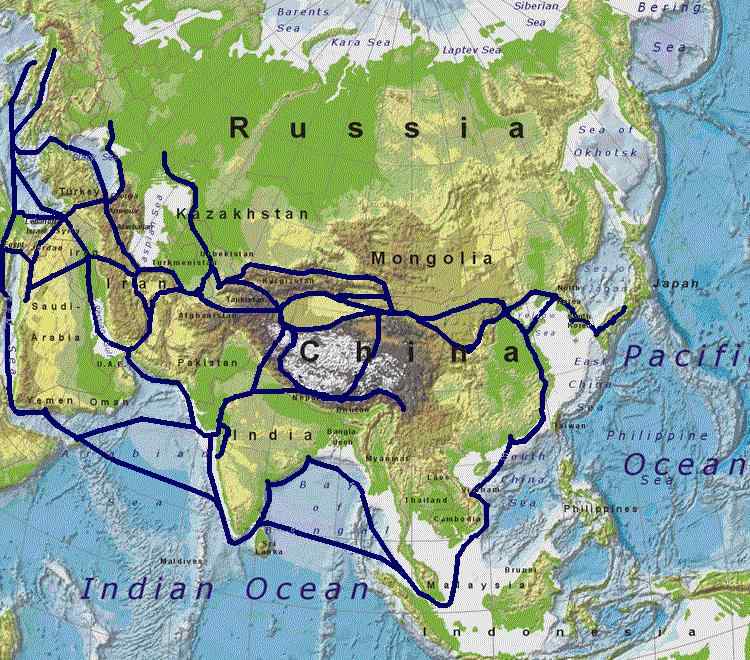The Silk Road: How Ancient Trade Routes Shaped the Modern World
The Enduring Legacy of the Silk Road: Ancient Trade Routes Connecting East and West

Introduction: Have you ever wondered about the ancient pathways that shaped our world? For centuries, the Silk Road was not merely a single route, but a vast and intricate network of trade routes spanning over 4,000 miles, truly connecting the East and West. Far beyond just trading silk, this incredible network fostered a profound cultural exchange of goods, revolutionary ideas, diverse religions, and unique cultures, leaving an indelible mark on all civilizations it touched. This article delves into the rich history, immense impact, and enduring legacy of this pivotal global network, from its origins and peak to its eventual decline and remarkable modern revival.
The Origins and Development of the Ancient Silk Road (2nd Century BCE - 14th Century CE)

Origins: The Silk Road’s fascinating origins date back to the Han Dynasty in Ancient China (207 BCE – 220 CE). Emperor Wu of Han sent Zhang Qian, a renowned envoy, on a mission to form alliances against the Xiongnu nomads. Though the military alliance wasn't fully achieved, Qian's courageous journeys successfully unveiled new trade routes stretching into Central Asia, sparking the vibrant exchange of valuable goods, famously Chinese silk, for items like horses.
Initially, these crucial trade routes were mainly land-based, crossing challenging landscapes such as the Taklamakan Desert and the Pamir Mountains. As centuries passed, this expansive network diversified into various paths, including the Northern Route, the Southern Route, and the significant Maritime Silk Road, enabling trade across an even broader array of regions. Important cities like Chang'an (now Xi'an), Samarkand, Bukhara, and Constantinople thrived as essential trading centers, evolving into dynamic hubs of diverse cultures and thriving commerce.
Beyond Goods: Cultural Exchange and Innovation on the Silk Road

Trade Diversity: While luxurious silk was indeed a highly coveted commodity in Western markets, the Silk Road enabled the trade of an incredible variety of other goods. China exported valuable items like tea, fine porcelain, exotic spices, jade, and paper. In return, the West provided wool, linen, gold, silver, exquisite precious stones, glass, and livestock. Yet, the true significance of this ancient trade route went far beyond mere material exchanges.
Most importantly, the Silk Road functioned as a vital channel for the widespread transmission of groundbreaking ideas and diverse religions. Buddhism, which originated in India, journeyed eastward along these very routes, becoming deeply rooted in Chinese, Korean, and Japanese societies. Other faiths such as Nestorian Christianity, Manichaeism, and Islam also traveled along these pathways, establishing new communities and profoundly shaping religious landscapes. Significant technological advancements, including the art of papermaking, gunpowder, and the compass, moved westward, playing a crucial role in igniting the Renaissance and the Scientific Revolution in Europe. Furthermore, mathematical and astronomical knowledge flowed freely in both directions, enriching scientific understanding across vast continents.
The Decline and Enduring Legacy of the Ancient Silk Road

Decline Factors: The Silk Road began its decline around the 15th century, influenced by several key factors. The emergence of new maritime trade routes, championed by European explorers like Vasco da Gama, provided a significantly faster and more economical way to transport goods globally. Simultaneously, growing political instability across Central Asia, marked by the fragmentation of the Mongol Empire, severely disrupted land trade and heightened dangers for merchants. Additionally, advancements in shipbuilding and navigation technologies made sea travel increasingly appealing.
Despite its eventual decline as the dominant trade route, the Silk Road’s legacy is incredibly deep and lasting. It vigorously promoted extensive cultural exchange, facilitated the rapid spread of vital knowledge, and fundamentally contributed to the profound interconnectedness of diverse civilizations. Even today, the vibrant cities dotting the Silk Road continue to stand as powerful testaments to its rich history, meticulously preserving architectural wonders and unique cultural traditions.
The Modern Revival: China's Belt and Road Initiative
Belt and Road Initiative (BRI): In the 21st century, China embarked on the ambitious Belt and Road Initiative (BRI), a monumental infrastructure development project specifically designed to rekindle the spirit of the ancient Silk Road. The BRI aims to forge stronger connections between Asia, Africa, and Europe through an expansive network of railways, roads, ports, and crucial energy pipelines. While the Belt and Road Initiative has garnered both considerable enthusiasm and some skepticism, it undeniably signifies a major effort to re-establish vital economic and political ties along the historical Silk Road routes, potentially heralding a new era of global interconnectedness.
Conclusion: The Enduring Impact of the Silk Road

Summary: In summary, the Silk Road remains a powerful testament to the transformative power of ancient trade routes and profound cultural exchange. Its undeniable impact on the development of civilizations across Asia, Europe, and Africa is immense. From facilitating the spread of religious beliefs like Buddhism to accelerating technological innovations, the Silk Road left an indelible mark on global history. Its enduring legacy continues to resonate strongly today, inspiring modern initiatives such as the ambitious Belt and Road Initiative and serving as a timeless reminder of the immense benefits derived from global interconnectedness.
